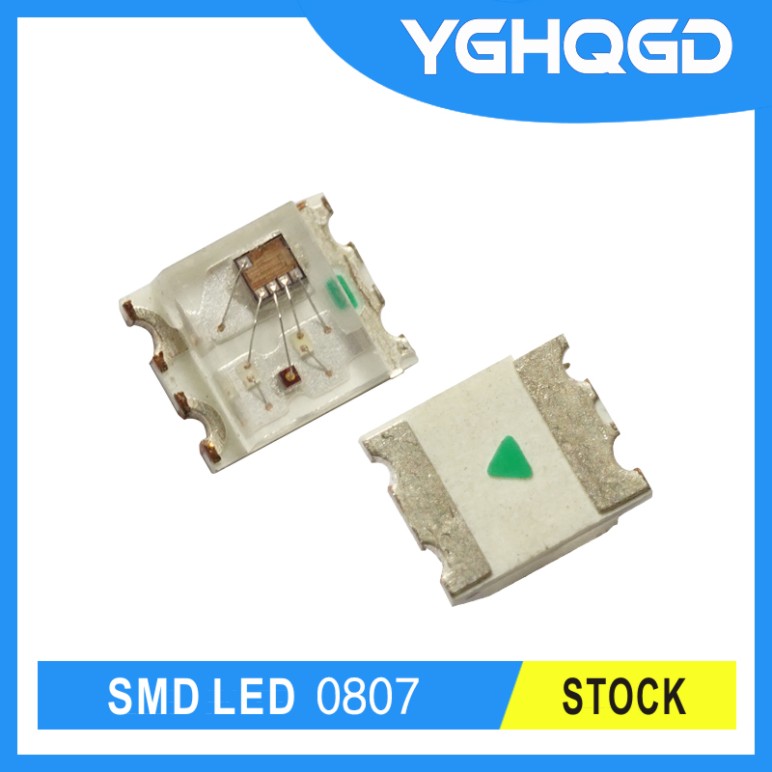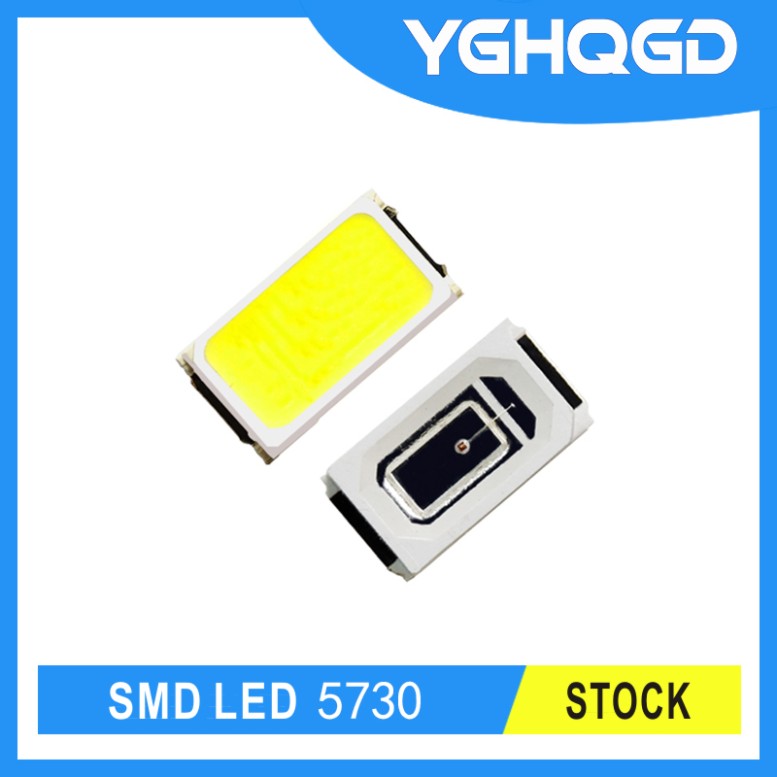


In recent years, silicon-based LED chips are gaining much attention. The mainstream blue-light led chips on the market are generally grown on sapphire substrates. Blue-light LED CHIP is grown on silicon carbide substrates.
In recent years, blue LED chips grown on silicon substrates have attracted more and more attention. Silicon substrate can adopt IC factory's automatic production line, it is easy to adopt the mature process of 6-inch and 8-inch line of IC factory at present, and the cost of large-size silicon substrate is relatively low, so the cost of future silicon substrate LED chip It is expected to be greatly reduced, and it can also promote the rapid penetration of semiconductor lighting. Silicon-based LED chips have the following characteristics in their characteristics:
● Vertical structure, the use of silver mirror mirror, the current distribution can be more uniform, so as to achieve high current drive;
● The silicon substrate has good heat dissipation and is conducive to the heat dissipation of the chip;
● With Lambertian luminescence, uniform light output, easy for secondary optics;
● Suitable for ceramic substrate package;
● Suitable for LED flash and directional lighting applications, can be used in indoor, outdoor and portable led lighting market.
In the development of silicon-based LED chips, l
ow-power silicon-based LED chips has been introduced and were widely used in digital
LED Display. We released a new generation of high-power silicon-based LED chip products, which has attracted the attention of the LED industry at home and abroad, and launched four silicon-based large-scale devices including 28mil, 35mil, 45mil, and 55mil.
45-mil power LED chips achieves 120lm/w of luminous efficiency, and reached 130lm/w with good reliability. Silicon-based LED chip ceramic package, compared with internationally renowned products, has a good price, has caused great interest at home and abroad packaging plant and
LED LAMP factory.
The LED market is in a period of rapid development. The further decline in the cost of LED chips will promote semiconductor lighting into households. Due to the low cost of silicon substrates and the maturity of IC manufacturing processes, with the continuous development of 6-12 inch large-size silicon-based LED technology, silicon-based LED technology will have great advantages in reducing costs and improving production efficiency. This will have a major impact on the LED industry.
High-brightness chip is facing the development bottleneck At present, the further development of the semiconductor lighting market requires that the light efficiency of the blue LED chips should be continuously improved, and the cost must be continuously reduced. Currently, CREE's silicon carbide-based LED chips have achieved volume production of 200lm/w light efficiency products, and the research and development level of light efficiency can reach 276lm/w. In the race to reduce the cost of LED chips and increase the efficiency of light, the following development bottlenecks are currently encountered.
The first is the Droop effect of blue led chips. At high current densities, the external quantum efficiency of light-emitting diodes will decrease. Experiments have shown that the Droop effect is caused by a variety of reasons including the Auger effect. This effect limits the use of blue chips at high current densities. Obstructed the decline in the cost of lumens.
The second is the green gap and the red gap. When the wavelength goes from the blue light to the green light, the quantum efficiency of the LED will decrease. For example, the quantum efficiency of green light at 530 nm will drop rapidly; for red light, the internal quantum efficiency may reach 100% in the deep red spectrum, but it is ideal for the red light. The efficiency of orange-red emission in a white light source (eg, 614 nm) rapidly decreases. These effects limit the improvement of the light efficiency of green and red chips and delay the production of high-quality white light in the future. In addition, the green and yellow LED efficiency is also affected by the polarization field itself, and this effect becomes stronger with higher indium concentration.
The third is the problem of epitaxial heterogeneity. Due to the presence of defects in the crystal during epitaxial growth, large dislocation densities and defects are formed, resulting in decreased light efficiency and decreased lifetime. At present, blue silicon chips, whether silicon carbide, sapphire, or silicon substrate technology, are all heteroepitaxy. There is a lattice mismatch between the substrate and the epitaxial crystal, which results in dislocations. At the same time, due to the difference in thermal expansion coefficient, the cooling process after epitaxial growth is different. Thermal stress occurs in the resulting epitaxial layer resulting in defects, cracks, wafer bowing, and the like. The quality of the substrate directly affects the crystal quality of the epitaxial layer, thereby affecting the light efficiency and lifetime. If GaN homogenous substrates are used for epitaxial growth, the use of non-polar technology can minimize the defects of the active layer, making the current density of the LED chips 5-10 times higher than conventional chips, and greatly improving the luminous efficiency. It is reported that Seoul Semiconductor adopts a new product of nPola developed on a homogeneous substrate. Compared with the current LED, the brightness on the same area is 5 times higher, but the GaN homogeneous substrate is still too expensive for the LED.
In general, flip chip, high voltage chip, silicon chip, etc. are the major development trends in the future development of blue LED chips. Flip chip can increase the injection current due to good heat dissipation, without the use of wire to improve the reliability of the product in the application process; high voltage LED chip can improve the power conversion efficiency due to more matching power supply voltage, plus custom IC power supply, the most Suitable for LED bulbs; silicon-based LED chips can be epitaxially grown on 6-inch or 8-inch silicon substrates, which can significantly reduce the cost of LEDs, thereby accelerating the advent of semiconductor lighting applications. For other colors, there is still much room for improvement in the efficacy of both red and green LED chips. With the further improvement of the red and green LEDs, the future of white light is not necessarily the current blue light. LED chips plus yellow phosphors may also be in RGB or other forms, and future white light packaging may also change significantly.


![]() June 03, 2023
June 03, 2023



